Which of the following is NOT an example of the purpose of a function point count?
Conversion software is developed to convert data from the Account application to the new Relationship Management application. Five logical files in the Account application are referenced by the conversion software to create the new Client Master File in the Relationship Management application. How is the data conversion counted for the development project?
ITEM CHECK-OUT SCREEN
Identify the functions used:
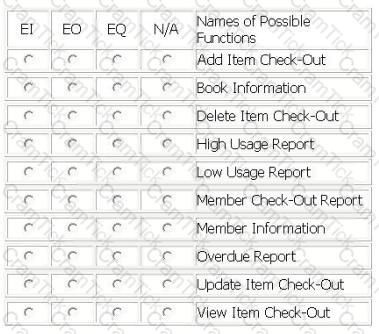
Several data functions are described in the scenario for the Accounts Receivable fAFO application:
From the Names of Possible Functions listed identify the data functions for the AR application. Select N/A if a Name of Possible Function does not apply.
Identify the functions used:
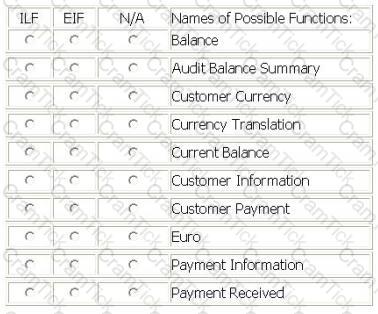
The revenue and expense amounts are retrieved from the General Ledger data store without any graph below be counted?
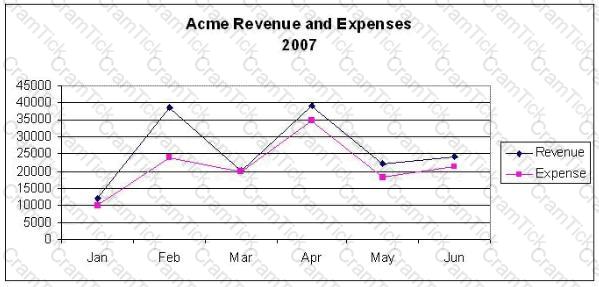
EXAM SCHEDULING SYSTEM (ESS) - EXAM SCHEDULING FUNCTIONS
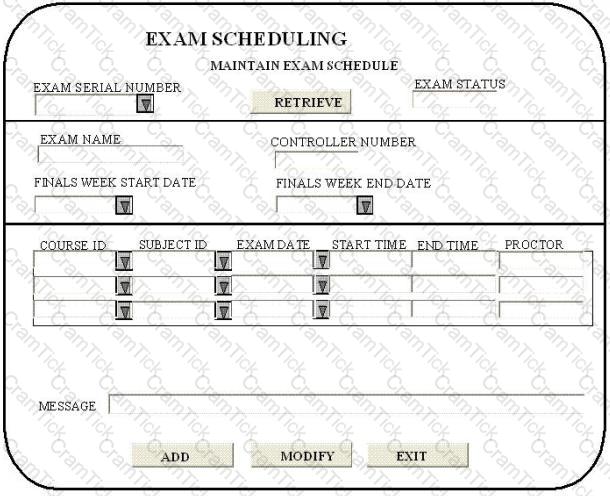
Determine the complexity for functions listed:
Select the complexity for each function:
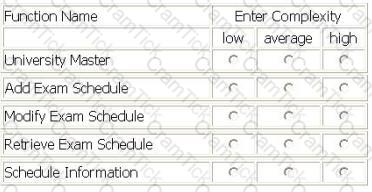
Which category (ies) of data entities is (are) usually identified to satisfy the Functional User Requirements?
The team has been asked to size the software associated with porting the Order Management system from one operating system to a different operating system. The project includes a one-time data conversion activity. Which of the following is true?
Which of the following forms of processing logic is mandatory that an EO perform at least one (m*)?
Several functions are outlined within the following scenario for the Internet Application (IA):
From the Names of Possible Functions listed identify the transactional functions for the IA application. Select N/A if a Name of Possible Function does not apply.
Identify the functions used:
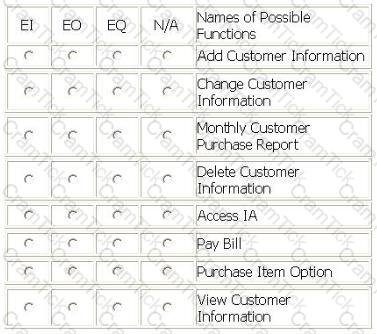
Phase 1 of an application enhancement adds 2 business function attributes to each of 3 files. No changes were made to reference the new attributes. Prior to the enhancement each of these files was valued at 3 RETs and 12 DETs. What is the CHGA of these files?
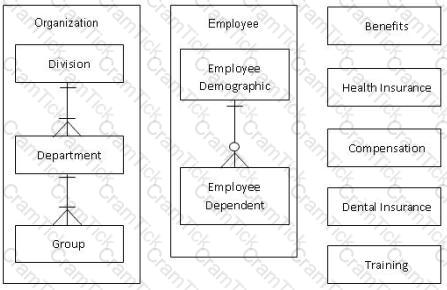
From the Names of Possible Functions listed identify the data functions for the HR application. Select N/A if a Name of Possible Function does not apply.
Identify the data functions used:
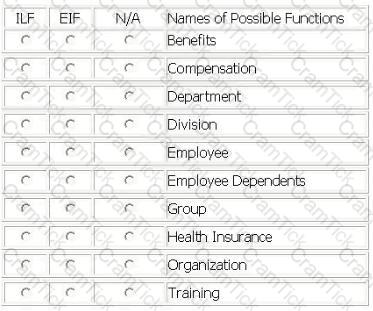
Data used by the Payroll Activity application is organized in the following logical groups:
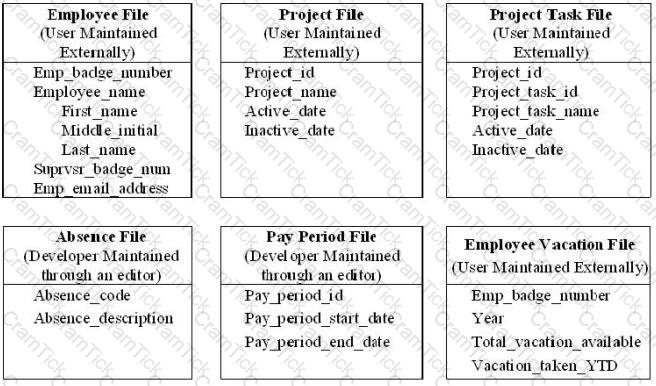
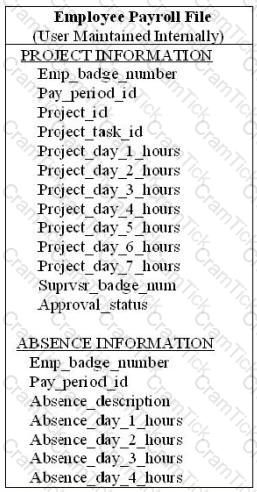
The Absence file and Pay Period file were implemented as part of the technical solution to facilitate business transactions.
From the Names of Possible Functions listed identify the data functions for the Payroll Activity application. Select N/A if a Name of Possible Function does not apply.
Identify the data functions used:
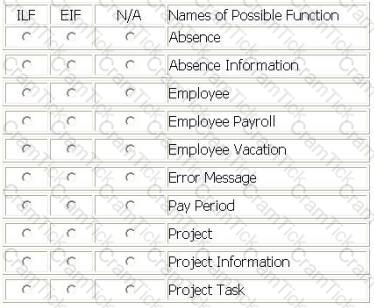
An Assets Tracking application has a batch update process. Twice a month each of the branch offices sends a transaction file to the headquarters.
Identify the functions used.
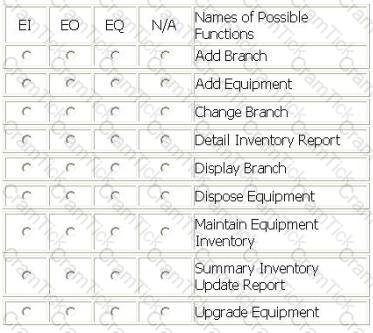
INTERNET APPLICATION (IA) -MAINTAIN INTERNET DATA
Determine the complexity of the data functions:
Determine the complexity of the following function:
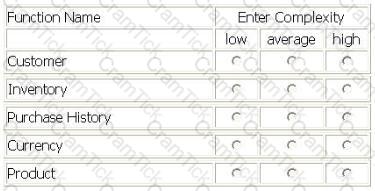
The Stock Purchasing (SP) and Point of Sale (POS) applications have the following requirements.
Identify the functions used:
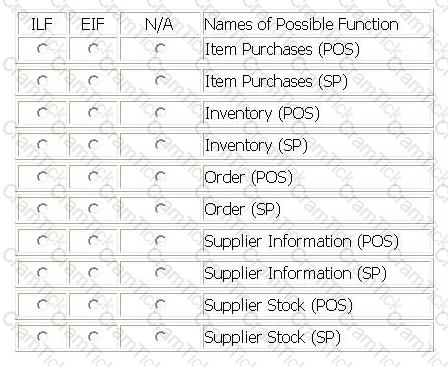
CORPORATE INFORMATION SYSTEM (CIS) - EMPLOYEE DATA TRANSFER
Determine the complexity for the functions listed.
Select the complexity for each function:
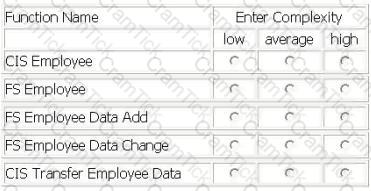
The Robot Automation Program (RAP) is an application which allows factory technicians to create and edit the weld placement programs for various robots on the assembly line. Both transactions maintain the Weld Specification and Robot logical files.
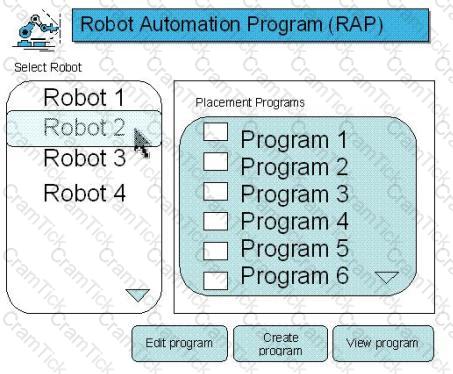
The use may select and view reboot details:
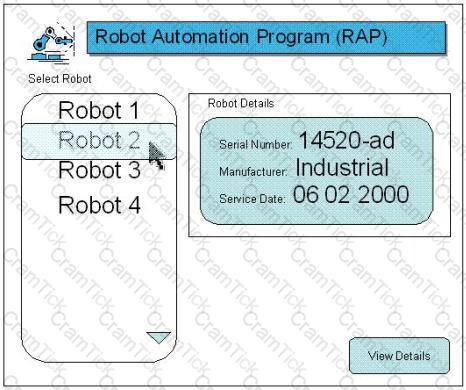
The user may print individual welding program details:
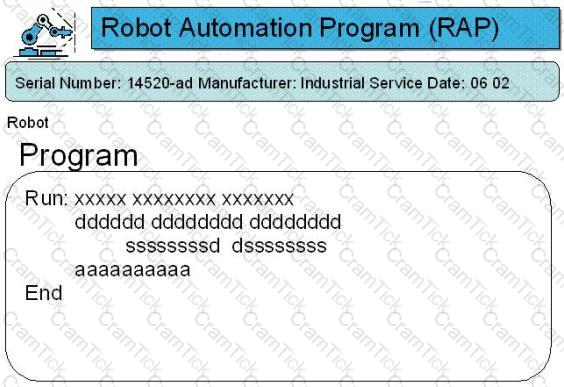
From the Names of Possible Functions listed identify the transactional functions for the RAP application. Select N/A if a Name of Possible Functions does not apply.
Identify the functions used:
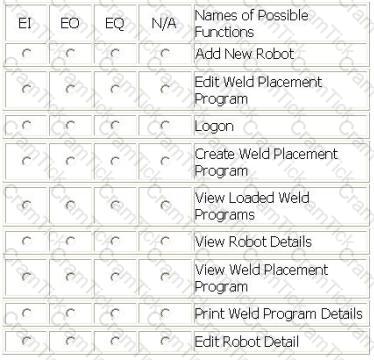
The High Point grocery store has implemented a frequent buyer program. Discounts on various products will be provided as an incentive for customers to register in the program. The Frequent Buyer (FB) application is being built to collect and store the customer information and to keep track of the purchasing patterns of the customers.
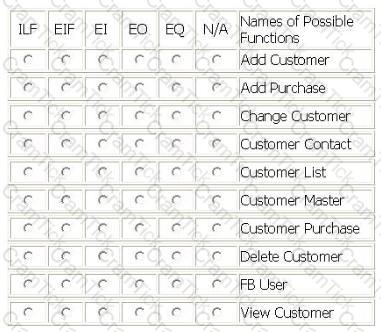
Which type of functional size (FS) measures the functionality added, changed, or deleted at the completion of an enhancement project?
The application functional size after an enhancement project does NOT include the size of the:
Which type of functional size (F5) measures the functions provided to the users with the first installation of the software?
A development project has created 450 FP in application functionality and created 45 FP in conversion functionality. What is the DFP?
The Human Resources Tracking application (HRT) is used to follow the status of all applicants to the company. When an applicant resume is received, the user immediately scans the applicant's resume using the HRT scan new applicant function. HRT assigns an applicant number to the resume image, saves the number and resume image to the Applicant ILF, and sends an email notification to the hiring manager. What transaction(s) would be counted for the new applicant function?
Within the Human Resources Application, information for an employee is added by entering general information. In addition to the general information, the employee is either a salaried employee or hourly employee. Each type of employee has unique attributes. Either type of employee can have information about dependents. How many RETs are described in this scenario?
IFPUG Certification | I40-420 Questions Answers | I40-420 Test Prep | Certified Function Point Specialist Questions PDF | I40-420 Online Exam | I40-420 Practice Test | I40-420 PDF | I40-420 Test Questions | I40-420 Study Material | I40-420 Exam Preparation | I40-420 Valid Dumps | I40-420 Real Questions | IFPUG Certification I40-420 Exam Questions


